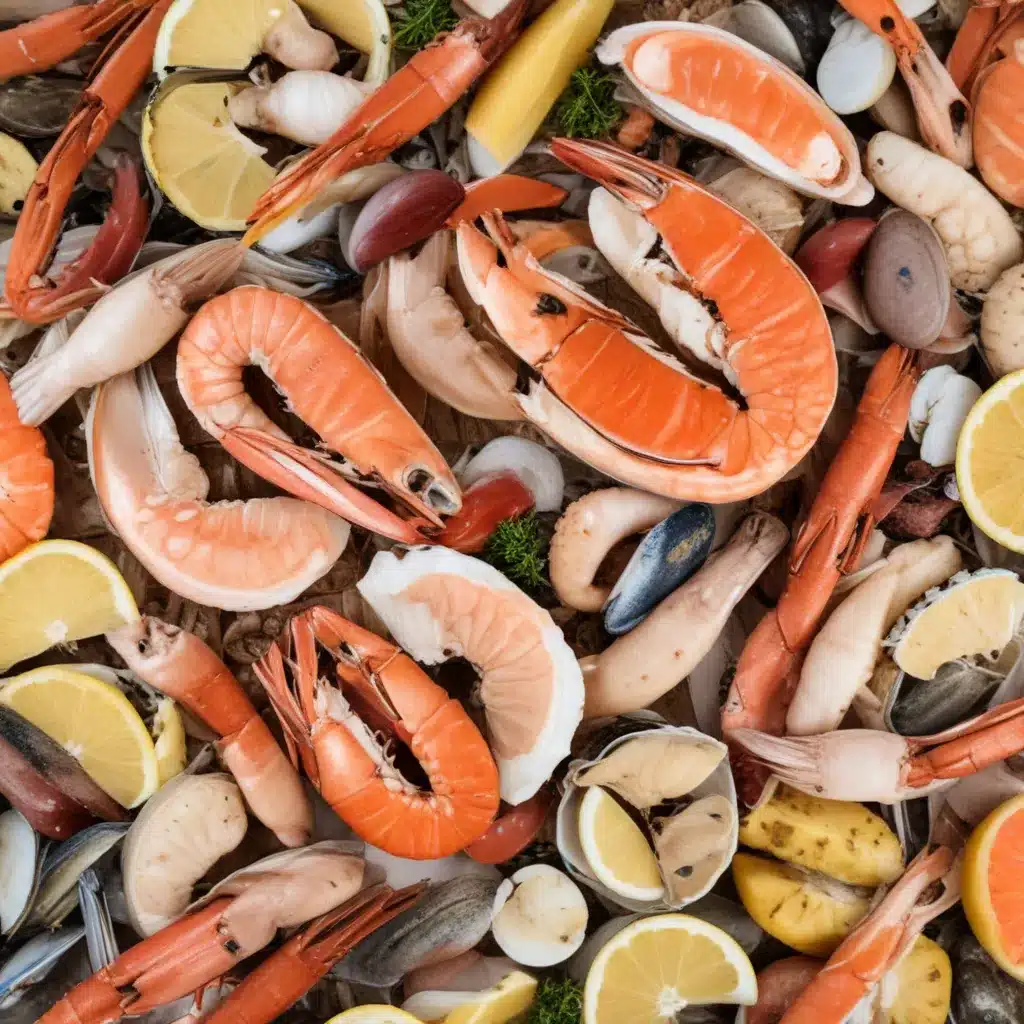
Seafood allergies affect millions of Americans, with the potential for severe, life-threatening reactions. As an expert seafood dining writer for Fish Tales Cafe, I’m here to share essential information on identifying, preventing, and managing this common food allergy.
Types of Seafood Allergies
The most prevalent seafood allergies involve finfish like cod, tuna, or salmon, as well as shellfish such as shrimp, crab, and lobster. While some people may only react to specific types of seafood, many with a seafood allergy must avoid the entire category to prevent dangerous cross-reactions.
Symptoms of Seafood Allergies
Allergic reactions to seafood can manifest in various ways, from mild hives or digestive issues to the severe, full-body response of anaphylaxis. Symptoms may appear within minutes or up to several hours after exposure, and can include skin rashes, swelling, difficulty breathing, nausea, or even a sudden drop in blood pressure.
Prevalence of Seafood Allergies
Seafood allergies are among the most common food allergies, affecting an estimated 6-8 million Americans. They tend to develop earlier in life compared to other food allergies and can persist throughout adulthood. Certain populations, like the coastal regions of the U.S., have even higher prevalence rates.
Allergy Testing Techniques
To properly diagnose a seafood allergy, your doctor will likely perform skin or blood tests to identify the specific allergens. This can involve pricking the skin with small amounts of different seafood proteins or analyzing the blood for immunoglobulin E (IgE) antibodies. Oral food challenges may also be recommended in some cases.
Diagnostic Criteria
A seafood allergy is confirmed when tests show a clear immune response to the suspected allergen, and the patient’s symptoms align with an allergic reaction. Your doctor will consider your medical history, test results, and reaction severity to determine the appropriate treatment plan.
Seeking Medical Advice
If you suspect you or a loved one may have a seafood allergy, it’s crucial to consult an allergist or immunologist. These specialists can provide an accurate diagnosis, prescribe necessary medications like epinephrine auto-injectors (EAIs), and offer guidance on managing the condition.
Recognizing Seafood Ingredients
Avoiding seafood products can be challenging, as they appear in many unexpected foods and ingredients. Look out for terms like surimi, fish sauce, isinglass, agar-agar, and carrageenan on labels, all of which may contain seafood-derived components.
Vigilant Label Reading
Thoroughly reading ingredient lists is essential for people with seafood allergies. Keep an eye out for any mention of fish or shellfish, and be wary of “may contain” or “processed in a facility” warnings, as even trace amounts can trigger a reaction.
Communicating with Caregivers
Ensuring your loved ones, friends, and community understand your seafood allergy is vital. Share your diagnosis, symptoms, and emergency response plan with teachers, babysitters, co-workers, and others who may be involved in your daily life.
Informing Restaurant Staff
When dining out, always inform servers, bartenders, and chefs about your seafood allergy. Inquire about preparation methods, cross-contamination risks, and the availability of allergy-friendly menu items.
Specialized Menu Options
Many restaurants now offer designated “allergy-friendly” or “allergen-sensitive” menus that highlight seafood-free dishes. These can be excellent resources for safely navigating the dining experience.
Asking Detailed Questions
Don’t hesitate to ask specific questions about ingredients and cooking processes. Servers should be able to provide detailed information or consult the kitchen staff to ensure your meal is safe.
Separate Cooking Surfaces
At home, maintain strict separation between seafood and other ingredients to avoid cross-contamination. Use dedicated cutting boards, utensils, and cooking vessels for seafood preparation.
Cleaning Utensils Thoroughly
Meticulous cleaning of all surfaces and tools that have come into contact with seafood is crucial. Dishwashers can be effective, but handwashing with hot, soapy water is the best way to eliminate residual allergens.
Avoiding Cross-Contamination
Be mindful of shared cooking environments, where seafood proteins can linger on shared equipment or surfaces. Take extra precautions when preparing meals for someone with a seafood allergy.
Importance of Carrying EAIs
For those with a known seafood allergy, always carrying prescribed epinephrine auto-injectors (EAIs) is vital. These life-saving devices can quickly counter the symptoms of anaphylaxis and should be easily accessible at all times.
Proper EAI Administration
Ensure you and your loved ones are trained on how to properly administer EAIs. This includes understanding the correct injection technique, storage requirements, and when to use the device in an emergency.
EAI Accessibility
In addition to personal EAIs, advocate for their widespread availability in public spaces like schools, restaurants, and community centers. Having accessible, emergency epinephrine can make a critical difference.
Creating an Action Plan
Develop a comprehensive emergency response plan that outlines symptoms, treatment steps, and contact information. Share this plan with family, friends, and caregivers, and review it regularly to ensure preparedness.
Educating Family and Friends
Empower your loved ones to recognize the signs of an allergic reaction and respond appropriately. Provide hands-on training for EAI administration and ensure they know your specific allergy triggers.
Practicing Emergency Drills
Regularly rehearsing emergency scenarios can help ensure a swift, effective response if a reaction occurs. Practice accessing and using EAIs, calling emergency services, and implementing your action plan.
Food Allergy Regulations
Familiarize yourself with food allergy-related laws and regulations in your area, such as requirements for restaurants to accommodate allergies or schools to stock emergency epinephrine. Understanding your rights can help you advocate for a safer environment.
Promoting Inclusive Environments
Engage with your community to raise awareness and encourage inclusive practices around food allergies. Work with schools, restaurants, and local businesses to foster a culture of understanding and accommodation.
Advocating for Allergy Policies
Consider connecting with advocacy groups like Food Allergy Research & Education (FARE) to support initiatives that improve food allergy management, education, and safety standards.
Managing a seafood allergy requires vigilance, preparation, and a strong support system. By staying informed, communicating openly, and advocating for change, you can help keep your loved ones safe and enjoy the many delights of the sea. For more information and resources, visit Fish Tales Cafe.

